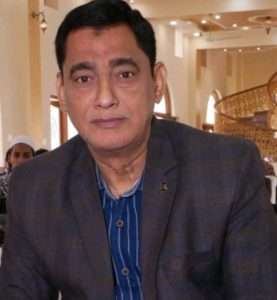Interview - Dr Misbah Ahmad Siddiqi
 Dr Misbah Ahmad Siddiqi is a prolific Urdu writer keen on the history of Amroha, particularly its Sufi roots. He has written 33 books and numerous academic articles. Apart from Urdu, he is an expert in Persian and has worked on translating some renowned works.
Dr Misbah Ahmad Siddiqi is a prolific Urdu writer keen on the history of Amroha, particularly its Sufi roots. He has written 33 books and numerous academic articles. Apart from Urdu, he is an expert in Persian and has worked on translating some renowned works.
Misbah Ahmad is a resident of Gher Munaf, Amroha.
1. How did writing a book first come to you?
Once, writer Sabir Sambhali asked me if I had written anything. I told him that I had written some fiction. Pat came his reply, “What has research got to do with fiction!” That inspired my first book, Tohfatul Ansab, which discusses the genealogy of various families in Amroha.
2. Which has been your most satisfying project?
Asraria Kashf-e-Sufiya, from the Persian manuscript Tadhkar-e-Sufiya by Hakeem Muhibbey. It was challenging work, but it came out well in both languages. Shuara-e-Amroha, a biographical sketch of eminent poets from Amroha, was the first such work to be published.
3. Do you feel that works in Urdu are not funded or appreciated enough?
On the contrary, I feel that good work is appreciated in any language.
4. Which personality from Amroha do you admire the most?
Professor Nisar Ahmad Faruqi and Professor Khaliq Ahmad Nizami are my ideals when it comes to writing prose. My style of writing is modelled after Professor Faruqi.
5. You have an extensive collection of books. Is there a plan to preserve them for the next generation?
I ensure that two copies of all my books are placed in the Raza Library, Rampur (UP), and Khuda Bakhsh Oriental Public Library, Patna (Bihar). In the future, if I feel that I cannot look after my library, I’ll donate it to a madrasa or a college.
6. Did you ever think of moving out of Amroha to explore new avenues when you were young, or do you plan to do it now?
The only project that took me out of Amroha was the one I did for the Raza Library. It involved working with three Persian manuscripts for the books Asraria Kashf-e-Sufiya, Quwwatul Kalam (a dictionary of Arabic, Persian, Hindi, and Turkish words), and Tadhkira-e-Shora-e-Rampur (a biographical sketch of eminent poets from Rampur).
I prefer to live and work in Amroha.
7. Which is your favourite history book and why?
Tareekh-e-Amroha by Mahmood Ahmad Abbasi for its authenticity. It’s a gift for Amroha.
8. In this social media age, people have short attention spans. How can we encourage people to read books, especially those on history?
We must make people realise that most social media posts do not carry proof of authenticity. On the other hand, books are available in libraries for reference. It takes a lot of effort to write and publish a book.
Dr Misbah Ahmad Siddiqi in conversation with Inam Abidi Amrohvi. (August 21st, 2024)
